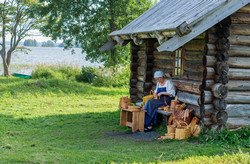On the path to transnational belonging
Work on the project NOSTALGIAFUTURE(opens in new window) (Nostalgia for the future: Transnational belonging as a socio-cultural resource in Europe's eastern peripheries) took place during a time of significant changes in the history of European borderlands. Moving into 2013, intense cultural exchanges were taking place between Finland and Russia, and Croatia was about to become the 28th EU Member State. Researchers drew from cultural anthropology, history, and human, cultural and political geography to map, document and explain the involvement of two nostalgia communities in cross-border encounters and cooperative heritage-related initiatives over the past 20 years. Through homeland associations and other supportive organisations, these groups – Finns from ceded Karelia and Italians from Istria, Venezia-Giulia and parts of Dalmatia – have been active in humanitarian aid, public health, environmental protection, tourism, heritage and arts. Project work covered a range of activities, including sourcing and evaluating academic literature and pertinent documents; media monitoring and analysis; and fieldwork such as interviews. NOSTALGIAFUTURE attended academic conferences, presented its research in popular media, published articles in peer-reviewed academic journals, and completed a proposal for publication of an academic book. The initiative also involved a collaborative workshop, the proceedings of which are due to be published in an edited volume. The team examined tangible (photographs, art, utensils and other material objects in private collections, museums and other institutional repositories) and intangible (townscapes, public buildings, memorials and natural landscapes) heritage relative to the two nostalgia communities. The latter included stories, beliefs and traditions, and their representation in cultural texts and rituals. Knowledge transfer has been successful in academic circles and beyond, with dissemination activities reaching policymakers and members of public. The project website is also used to share relevant information and provides links to various images and videos from the NOSTALGIAFUTURE digital archives. The work has advanced a deeper understanding of how heritage can either contribute to or hinder the development of a culture of tolerance that is needed for cross-border integration.







